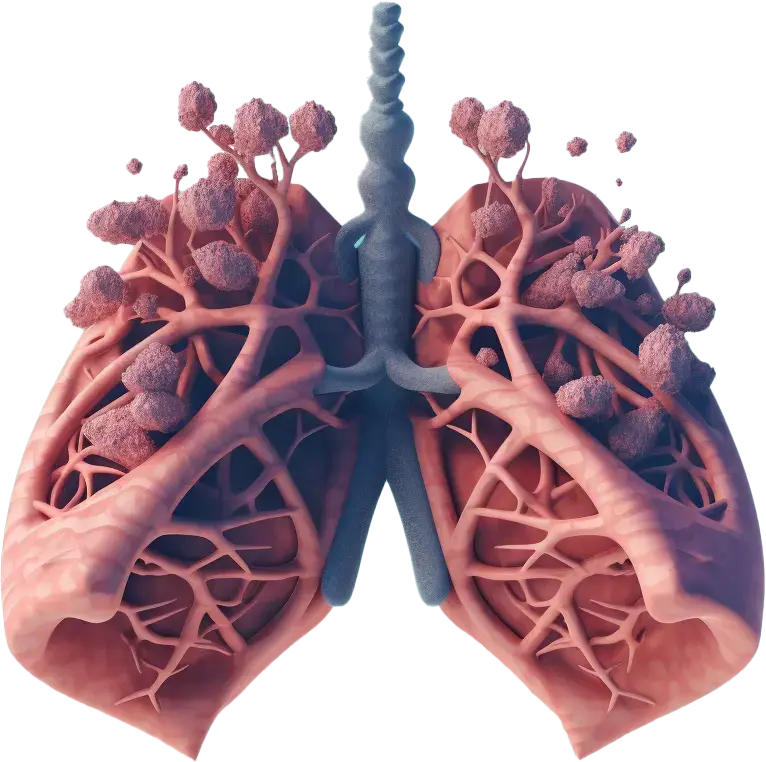Welcome!
In our lab, we are interested in looking into the mechanisms behind sex-specific differences in lung diseases as it pertains to Neonatology.
Krithika Lingappan, MD, PhD, MS
Our unique niche is to elucidate the mechanisms sex-specific differences in neonatal hyperoxic lung injury with the goal to develop individualized therapeutic options to decrease morbidity in preterm babies. Sex-specific differences exist in various forms of organ injury in adults and children. Neonatal outcomes for males are worse than females for many diseases, including bronchopulmonary dysplasia (BPD). Being a neonatologist, Dr. Lingappan's interest was in the field of neonatal lung injury and repair.
Meet the rest of the lab 👩🔬Sprouting Angiogenesis in male and female human pulmonary microvascular endothelial cells.
Our research
Bronchopulmonary dysplasia (BPD), a debilitating lung disease with long-term consequences, is the most common morbidity in extremely premature neonates. Male babies have a higher incidence of BPD compared to females. We study how lung injury and repair is different between male and female neonates and elucidate the molecular mechanisms modulating these sex-specific differences.
Currently funded projects 📝
Projects in pipeline 🚧
Bronchopulmonary dysplasia (BPD), a debilitating lung disease with long-term consequences, is the most common morbidity in extremely premature neonates. Male babies have a higher incidence of BPD compared to females. In this proposal, we will study how small RNAs lead to sex-specific differences in lung injury in repair. This will lead to the development of novel approaches and individualized therapeutic options for BPD.
Bronchopulmonary dysplasia (BPD), a debilitating lung disease with long-term consequences, is the most common morbidity in extremely premature neonates. Male babies have a higher incidence of BPD compared to females. In this proposal, we will study how lung injury and repair is different between male and female neonates and elucidate the molecular mechanisms modulating these sex-specific differences.
Bronchopulmonary dysplasia (BPD), a debilitating lung disease with long-term consequences, is the most common morbidity in extremely premature neonates. Male babies have a higher incidence of BPD compared to females. In this proposal, we will study how the Notch pathway could lead to sex-specific differences in lung repair after exposure to hyperoxia. This will lead to the development of novel approaches and individualized therapeutic options for BPD.
Single cell Seq experiment to look at heterogeneity in different lung cell subpopulations and sex-specific differences.
Use the Four Core Genotype mice to delineate the role of sex hormones versus sex chromosomes on lung development, injury and repair.
Lineage Tracing Models to study the cell fate of endothelial cells in lung injury and repair.
Use Endothelial cell specific AAV to deliver therapies or to temporally turn off or turn on key genes to study their role in neonatal lung injury and repair.
Latest Publications
Sex-related external factors influence pulmonary vascular angiogenesis in a sex-dependent manner.
American journal of physiology. Heart and circulatory physiology.
The Need to Address Sex as a Biological Variable in Neonatal Clinical Studies.
The Journal of pediatrics.
Lung biopsy in infants with severe bronchopulmonary dysplasia.
Pediatric pulmonology.
Videolaryngoscopy versus direct laryngoscopy for tracheal intubation in neonates.
The Cochrane database of systematic reviews.
Loss of cytochrome P450 (CYP)1B1 mitigates hyperoxia response in adult mouse lung by reprogramming metabolism and translation.
Redox biology.
Open positions
We are looking for graduate students looking to push our research forward while learning vital skill sets for their all-round development as a scientist.
Critical Thinking
Problem Solver
Willing to learn (Growth Mindset)
Self-Motivation
Honesty
Strong work ethic
Contact Us!
Section of Neonatology, Department of Pediatrics
lingappank AT chop DOT edu
